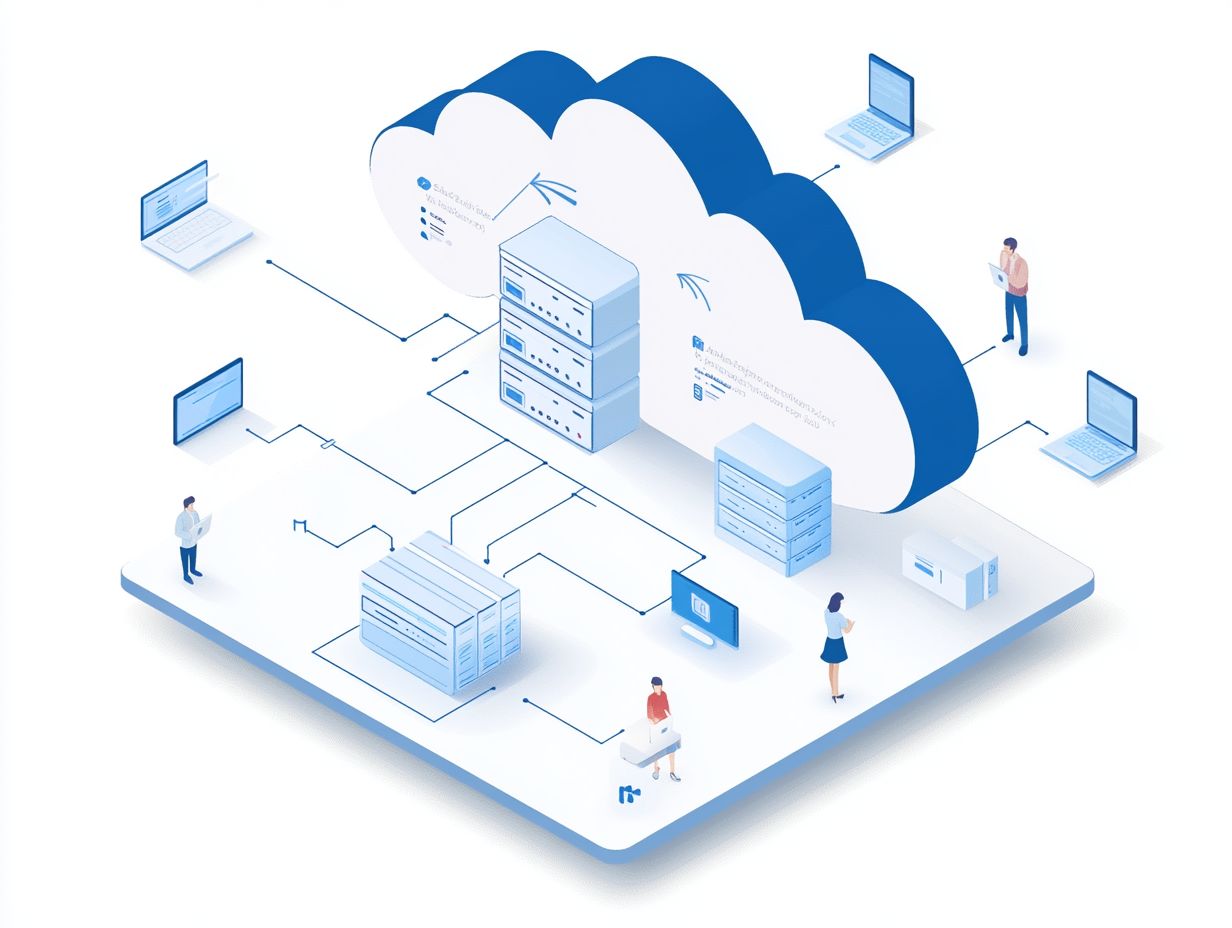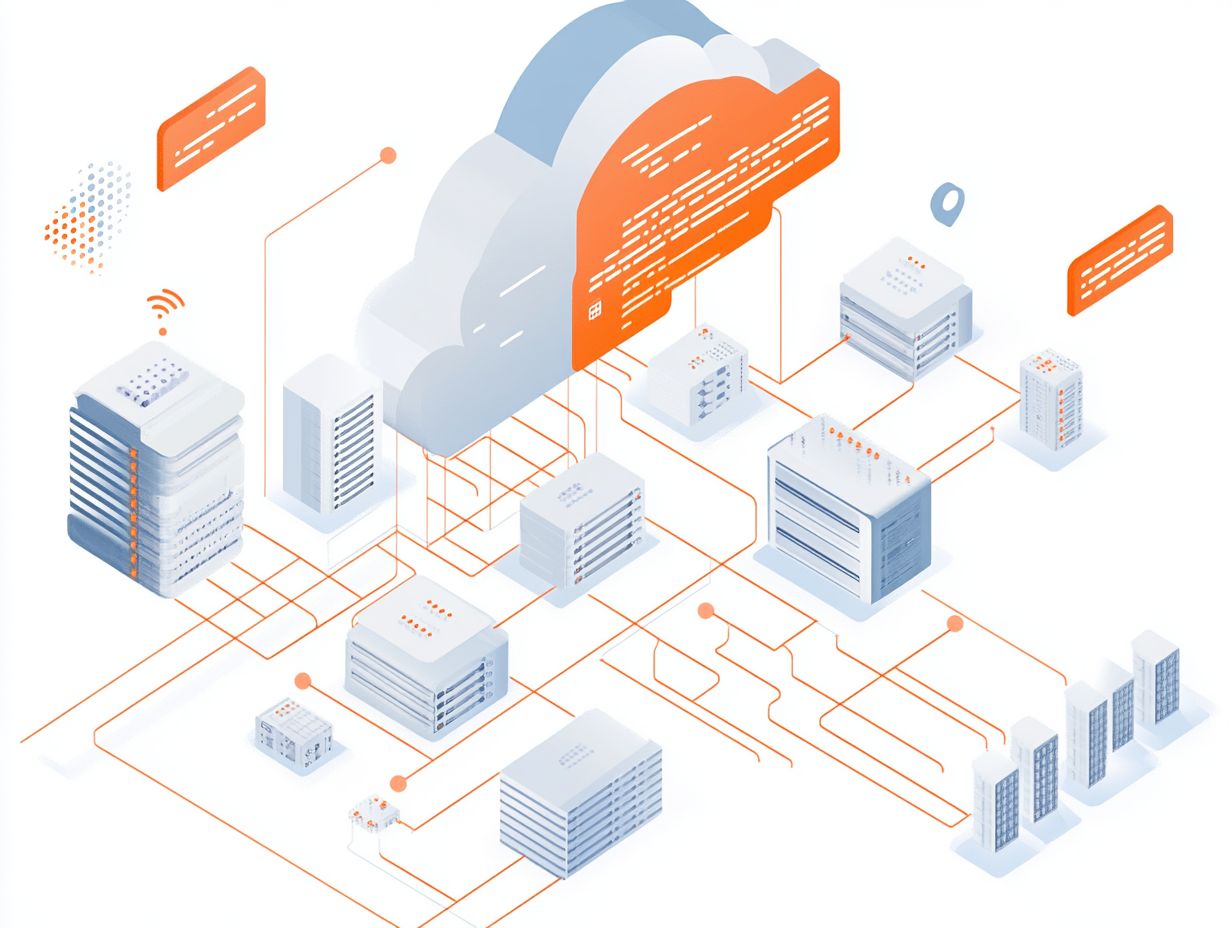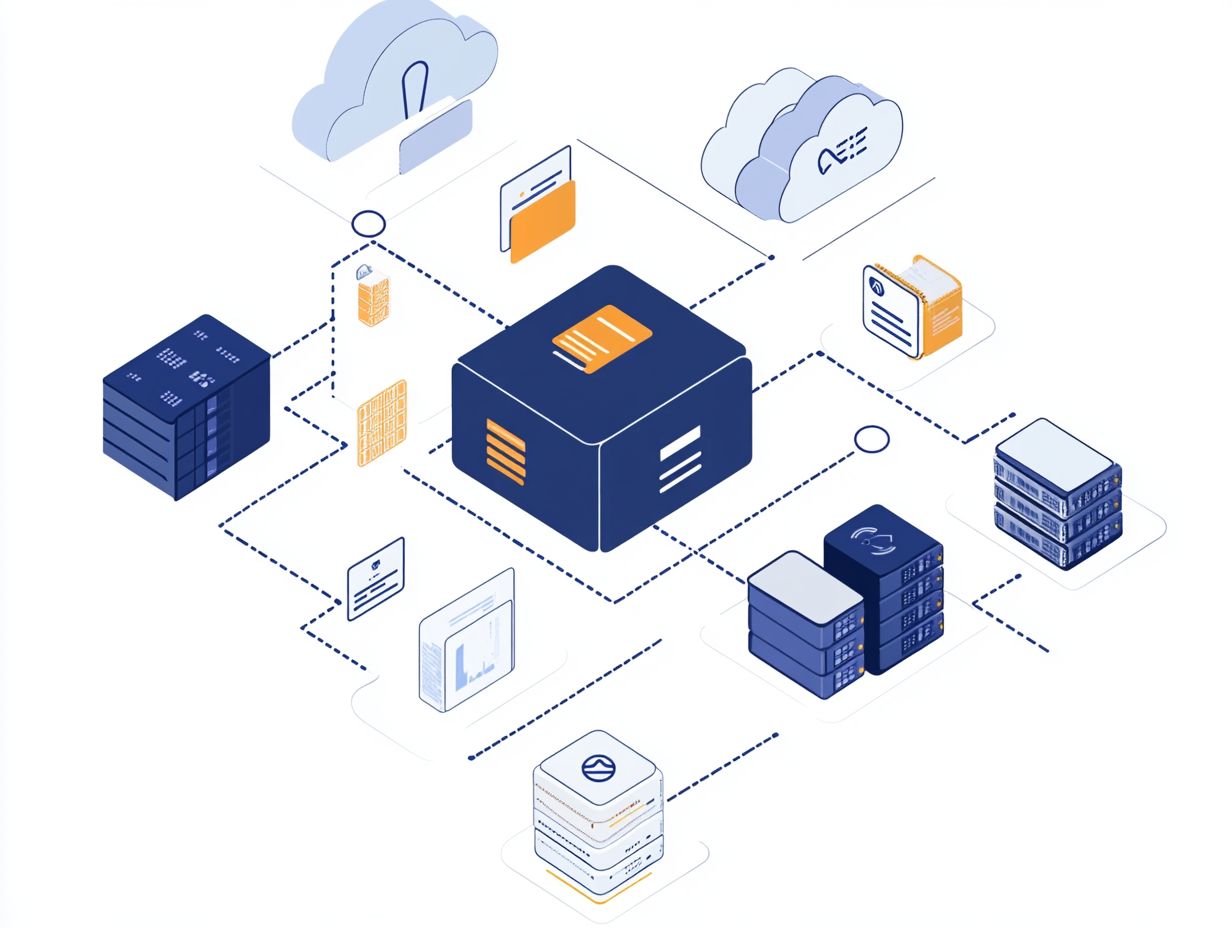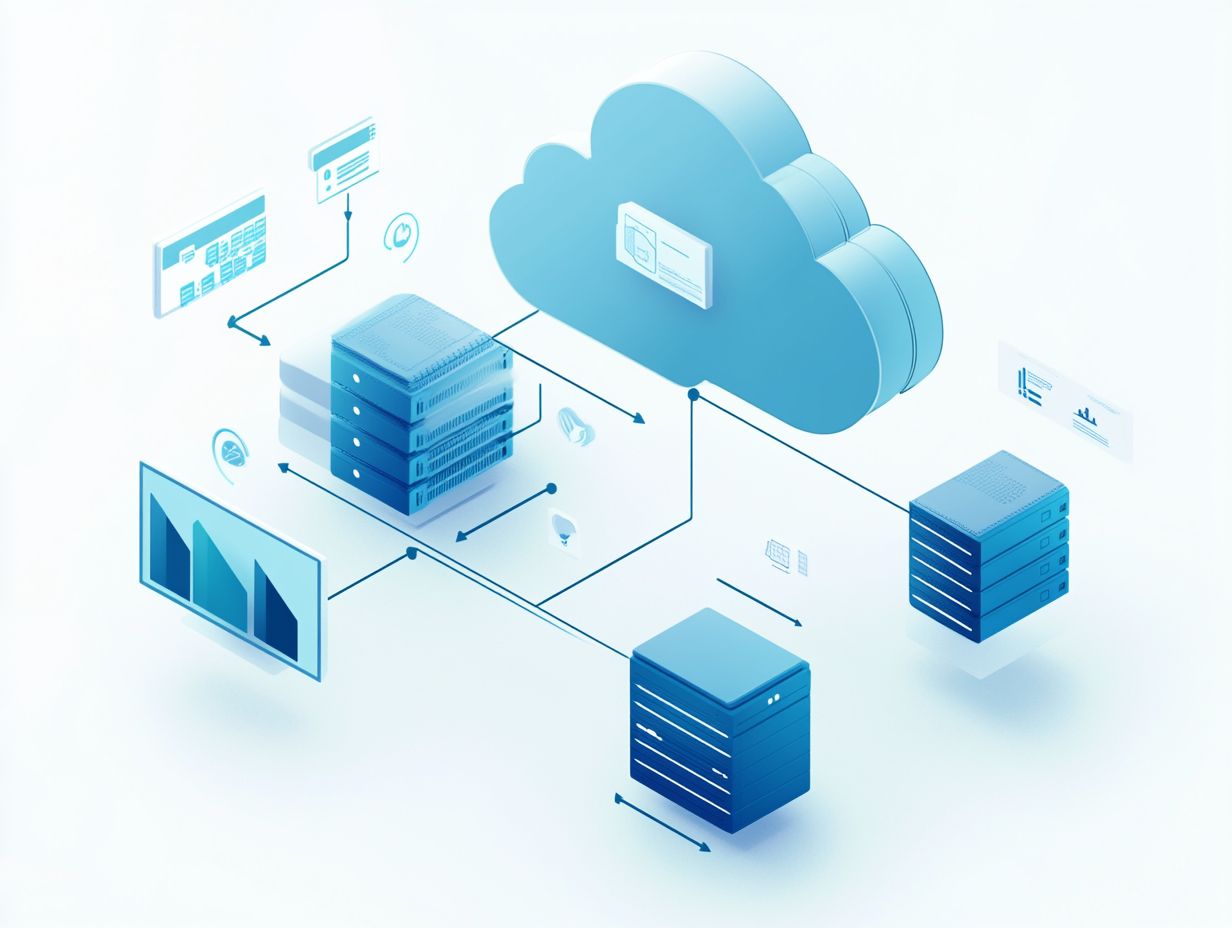Understanding the Shared Responsibility Model in Cloud Storage
In today’s digital landscape, cloud storage has emerged as an essential tool for both individuals and businesses.
With its convenience comes a complex framework of responsibilities that you must navigate alongside your cloud service provider. This article delves into the Shared Responsibility Model, outlining the distinct roles each party plays in ensuring data security and effective management.
From grasping the security measures put in place by providers to acknowledging your obligations for data oversight, we aim to clarify common misconceptions and spotlight the benefits of this collaborative approach.
Dive in now to unlock the full potential of your cloud storage experience!
Contents
Key Takeaways:

The Shared Responsibility Model defines the roles and responsibilities between Cloud Service Providers and users in securing and managing data in Cloud Storage. Cloud Service Providers are responsible for implementing security measures and protecting data.
The Shared Responsibility Model results in improved security and efficiency for both Cloud Service Providers and users, but it is important to clarify misconceptions and understand the specific responsibilities of each party.
What is Cloud Storage?
Cloud storage is a sophisticated service model that gives you the power to store data on a remote server, expertly managed by leading cloud providers like AWS, Azure, or Google Cloud. This means you can access and manage your data from virtually anywhere, significantly reducing the need for local storage infrastructure.
You ll find a variety of cloud storage options designed to meet diverse business needs, including:
- Infrastructure as a Service (IaaS) – provides essential hardware resources.
- Platform as a Service (PaaS) – offers a robust platform for developing applications.
- Software as a Service (SaaS) – delivers software solutions directly over the internet.
The core functionality of cloud storage provides centralized data access, ensuring scalability and flexibility for organizations of all sizes. One standout benefit is its cost-effectiveness; you only pay for the storage you use. Cloud providers also implement strong data protection measures and security to build trust in shared data environments.
The Shared Responsibility Model is crucial for you to understand as it outlines your role in keeping your data safe. It distinctly outlines the responsibilities of both cloud providers and customers in protecting data and applications within environments such as AWS, Azure, and Google Cloud.
By embracing this model, you gain a clearer understanding of your security posture and compliance obligations, empowering your organization to navigate the complexities of cloud security with confidence.
Explanation of the Model

The Shared Responsibility Model clarifies how security is divided between cloud providers and customers, highlighting your role in managing access controls, ensuring data confidentiality, and handling incident management.
In this framework, cloud providers take care of the underlying infrastructure security, which encompasses physical security measures and basic network protection. However, it s up to you to oversee critical areas like identity management, ensuring that only authorized users can access sensitive data.
You are also responsible for vulnerability management, which means regularly assessing your applications for potential security threats and implementing necessary updates. Maintaining appropriate security configurations is entirely in your hands, requiring diligence in protecting your specific environment and adhering to compliance requirements that govern data protection and privacy regulations.
Responsibilities of Cloud Service Providers
Cloud service providers such as AWS, Azure, and Google Cloud hold the critical responsibility of safeguarding the underlying infrastructure. They implement a robust array of security measures, encompassing physical security, network security, and regular security audits.
This diligent approach ensures compliance with various regulatory frameworks, giving you peace of mind as you leverage their services for your needs.
Security Measures and Data Protection
Security measures and data protection are essential pillars of your cloud service provider’s responsibilities. They implement a range of security features, including advanced encryption strategies and stringent physical security measures to safeguard your data.
Threat detection methods play a crucial role in identifying potential security breaches before they escalate into serious issues. Vulnerability management involves actively addressing weaknesses in the system that could be exploited by malicious actors.
A robust incident management protocol ensures that any security incidents are swiftly contained and remediated. This minimizes operational burdens on you. Together, these elements create a cohesive security framework that enhances security policies and builds trust among users. This contributes to a more secure cloud environment.
Responsibilities of Cloud Storage Users

As a cloud storage user, you carry significant responsibilities. This includes expertly managing user access controls and implementing robust user management practices.
By doing so, you safeguard sensitive data stored in the cloud, maintaining its integrity and confidentiality.
Data Management and Access Control
Effective data management and access control are paramount for you as a cloud storage user, empowering you to safeguard sensitive information through sophisticated user management and security configuration strategies.
To attain optimal security, it is vital to implement stringent access controls. This ensures that only authorized individuals can view or modify sensitive data.
Identity management plays a crucial role in this endeavor, enabling secure authentication while minimizing the risks associated with unauthorized access. Adhering to compliance regulations aligns your data management practices with industry standards.
This effectively protects financial and personal information. Cultivating a culture of awareness around security policies allows you to better defend against potential breaches and maintain the integrity of your critical data.
The Shared Responsibility Model presents a host of advantages for you, including enhanced security and a lighter operational load.
This framework empowers your organization to concentrate on strengthening your overall security posture while entrusting cloud providers with the critical task of safeguarding infrastructure.
Improved Security and Efficiency

Improved security and efficiency are standout benefits of the Shared Responsibility Model. It allows you to delegate specific security responsibilities to your cloud service providers.
This eases your operational burden and frees you up to focus on what you truly excel at. By embracing this framework, you can concentrate on your core competencies without getting mired in security complexities.
This transition enhances operational efficiency and strengthens compliance with industry regulations and standards. With the cloud service provider taking charge of various security measures, you can implement more robust security strategies.
This significantly reduces the risk of data breaches. This model promotes a proactive approach to security, enabling your teams to prioritize innovation while efficiently meeting compliance mandates.
Ultimately, this leads to a more resilient organizational structure, well-prepared to adapt to the ever-evolving landscape of security challenges.
Despite its significance, you may encounter various misconceptions about the Shared Responsibility Model.
There are often misunderstandings about how much responsibility you hold for security controls and compliance requirements. It’s essential to clarify these points to fully grasp your role in this framework.
Clarifying Myths and Misunderstandings
Understanding the myths surrounding the Shared Responsibility Model is essential for ensuring your security responsibilities are met. This model clarifies the roles of cloud providers and customers in securing data.
A common misconception is that security solely falls on cloud providers. This belief can lead you to overlook your own role in protecting your data.
While providers manage the infrastructure, you must secure your applications and data. Cultivate a security-first mindset to help minimize vulnerabilities.
Watch this video to learn more about the Shared Responsibility Model.
Frequently Asked Questions
What is the Shared Responsibility Model in Cloud Storage?
The Shared Responsibility Model outlines the division of security responsibilities between a cloud service provider (CSP) and their customers. It clarifies who is responsible for securing what when using cloud storage services.
Why is it important to understand the Shared Responsibility Model in Cloud Storage?
Understanding the Shared Responsibility Model is essential for your security! It outlines the specific security responsibilities of both the CSP and the customer, helping to prevent misunderstandings and ensure comprehensive data and infrastructure security.
What are the responsibilities of the CSP in the Shared Responsibility Model?
The CSP is responsible for securing the underlying infrastructure of the cloud storage service, which includes physical security, network and server security, and maintaining compliance with industry regulations. They also ensure the availability and reliability of the service.
What are the responsibilities of the customer in the Shared Responsibility Model?
The customer is responsible for protecting their own data and applications stored in the cloud. This includes implementing access controls, encryption, and managing user access. Additionally, the customer must secure their own virtual machines, operating systems, and applications.
What happens if there is a security breach in the cloud storage service?
In the event of a security breach, the CSP is responsible for notifying customers and mitigating the breach. However, the customer must also take steps to protect their information as they are responsible for securing their own data and applications.
How can I ensure that I am meeting my responsibilities in the Shared Responsibility Model?
To meet your responsibilities, thoroughly understand the terms of your service level agreement (SLA) with your CSP. Regularly review and update your security measures to ensure compliance and protect your data.
Take action now! Review your cloud security measures today to ensure you are fully protected.






